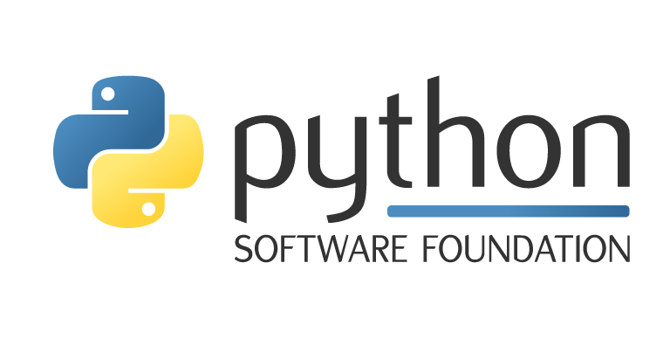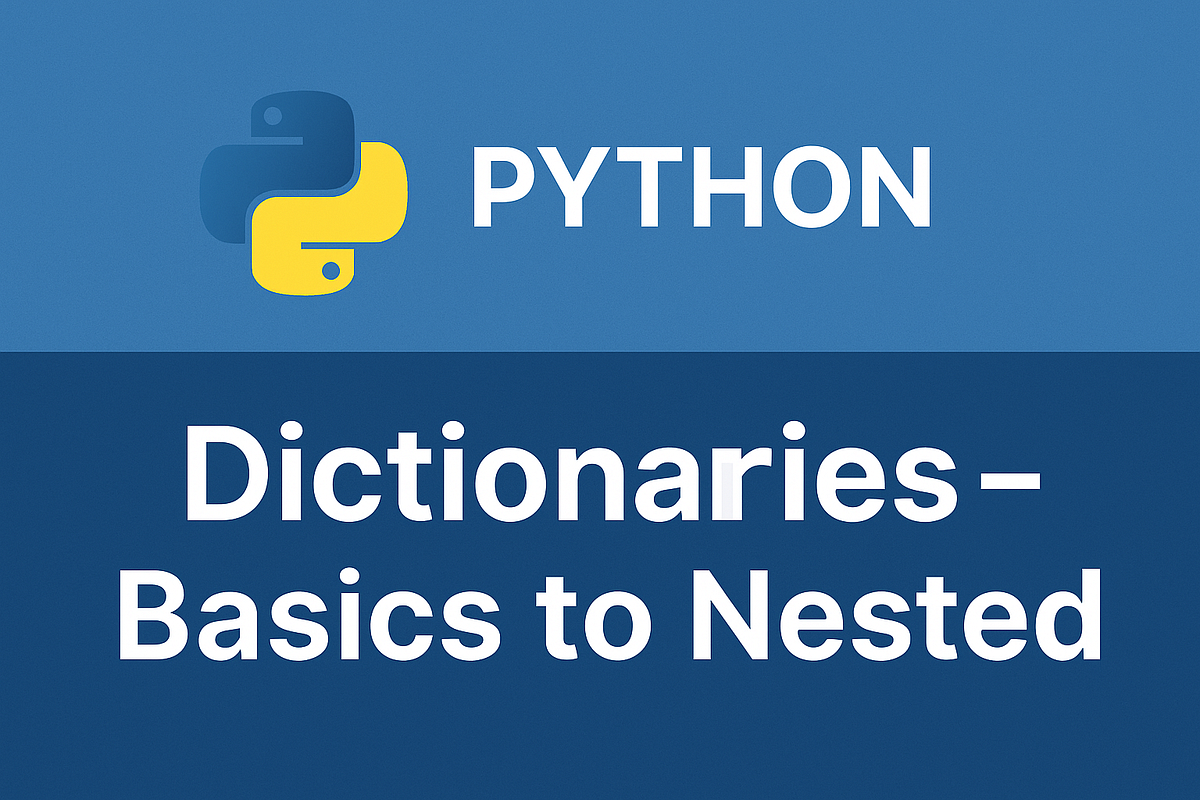Python
Medium
24
Image Credit: Medium
7 Python Libraries You Need as a Data Analyst in 2025
- In 2025, data analysts need these 7 Python libraries for problem-solving, automation, and clear insights.
- The libraries mentioned are versatile and cover various tasks such as data cleaning, feature engineering, reporting, Excel exports, exploratory analysis, and more.
- The emphasis is on using Python for creating plots instead of relying on JavaScript or drag-and-drop tools.
- These libraries are recommended for tasks like exploratory data analysis, creating slide-ready charts, and sharing visual insights within notebooks.
- One of the libraries is suitable for math-heavy work, simulations, and tasks requiring avoidance of slow loops.
- Another library is ideal for quick machine learning prototypes, churn prediction, A/B analysis, and segmentation.
- One of the libraries is designed for creating client dashboards, executive reports, web visualizations, and monitoring key performance indicators (KPIs).
- A recommended library can be used for reporting pipelines, Excel automation, and dynamic file generation.
- There is also a library suggested for connecting data pipelines, querying production databases, and loading large tables into Pandas.
- The article advises users to choose these libraries based on their specific use cases rather than succumbing to the Fear of Missing Out (FOMO).
- The key message is to focus on using tools that work harmoniously together, address real problems, and simplify the user's workflow by sticking to a core set of 7 effective libraries.
- The recommendation is to build proficiency using these libraries, generate valuable insights, and iterate the process for continual improvement.
Read Full Article
1 Like
Medium
381

Image Credit: Medium
Part 1: Python + Go Project: Exploring Multi-Language Development
- The project involves exploring multi-language development using Python and Go to create a Monster Breeder application.
- Go is responsible for handling monster creation, DNA, mutation, and returns clean JSON, while Python manages the frontend, displaying monsters, sending requests, and eventually saving them.
- The project is structured in VS Code with a clean folder layout and a go.mod file to manage dependencies and package structure.
- Go is utilized for creating the monsters with each having specific traits.
- The project involved converting the result into JSON and running the program to generate random monsters.
- Go is considered more strict and low-level compared to Python but is faster and more efficient for APIs and backend processing.
- Python communicates with Go to retrieve the monsters through the /new route using the requests module.
- The Python script uses a GUI to generate and breed monsters based on the data received from Go.
- The Python script currently displays the JSON data and future work involves generating sprites for the monsters.
- The project is a learning experience in making Python and Go languages communicate within the same project.
- The goal is to build a Monster Breeder application with elements of randomness and evolution, akin to Pokemon.
- Both Python and Go are used for their respective strengths: Go for backend logic and Python for frontend UI.
- The project progresses with testing the communication between Python and Go, with Python displaying the monsters generated by Go.
- The application includes functionality to breed and evolve the monsters, with buttons triggering the relevant functions.
- The developer expresses excitement in tackling the challenge of generating sprites for the monsters in the future.
- The project showcases the cooperation between Python and Go in a multi-language development environment for a creative and engaging application.
Read Full Article
22 Likes
Dev
237

Image Credit: Dev
📝 Beginner-Friendly Guide "Maximum Manhattan Distance After K Changes" LeetCode 3443 (C++ | Python | JavaScript)
- LeetCode 3443 is a medium-level problem involving navigating a grid with restrictions on direction changes.
- The task is to maximize the Manhattan distance (|x| + |y|) achievable at any point during the movement process.
- By considering different dominant directions and adjusting movements, the goal is to reach the farthest edge.
- The solution involves greedily spending direction changes to optimize the movement and track maximum distance.
- In C++, a solution using a greedy approach with linear scanning has been provided.
- The time complexity of the C++ solution is O(n) and the space complexity is O(1).
- A JavaScript solution has also been presented using a similar greedy strategy for maximizing the distance.
- Additionally, a Python solution implementing the same logic with a focus on direction changes and distance tracking is available.
- This problem showcases a clever blend of grid simulation and a greedy approach to achieve optimal results.
- It efficiently handles a large number of operations and encourages algorithmic intuition development.
Read Full Article
14 Likes
Medium
389
Image Credit: Medium
Mastering Background Tasks in Python: My Journey Building a Task Scheduler From Scratch
- The author found Celery and Cron to be inadequate for task scheduling in Python.
- They developed a basic, non-blocking task runner using asyncio.
- The approach allowed mixing async with blocking logic without freezing the main event loop.
- The main thread can run the task runner or be spun off into its own daemon thread.
- They utilized a pattern to handle transient failures like network blips or file locks.
- The system provided predictable teardown behavior when running as a service.
- Every job now runs with full visibility, eliminating the need to grep logs.
- The architecture supported running over 10k jobs per week in production with minimal issues.
- The project was rewarding and educational, offering insights into Python's concurrency.
- It emphasized leveraging Python's core primitives to build powerful systems tailored to specific use cases.
- The author encouraged others to try this approach for scheduling background tasks, starting small and growing iteratively.
- Automation is highlighted as a means of both saving time and reclaiming control.
Read Full Article
23 Likes
Discover more
Dev
131

Image Credit: Dev
My First Week with Python: A Summer of Curiosity and Code
- A first-year engineering student from Madhav Institute of Technology & Science is using their summer break to dive into coding with Python.
- Python was chosen for its readability, power, and versatility across various fields like web development, automation, AI, and data science.
- The student embraced Python to not just read but to understand by experimenting, encountering bugs, and learning through challenges.
- Despite facing errors and frustrations, the student finds growth in every challenge, acknowledging that learning involves making mistakes.
- Key learnings from the first week include mastering Python syntax, working with various data types, grasping input/output functions, and understanding the differences between Python 2 and Python 3.
- The student delved into pattern printing to enhance logic-building skills, appreciating the challenge hidden behind seemingly simple tasks.
- The student invites others on coding journeys to share resources, tips, and experiences, fostering a supportive learning community.
Read Full Article
7 Likes
Dev
160

Image Credit: Dev
Execute Python with Shebang - Make Your Scripts Executable
- The shebang line in a Python script allows it to be run as an executable command-line tool without needing to prefix it with 'python'.
- It consists of #! followed by the interpreter path, such as #!/usr/bin/env python3.
- Using '/usr/bin/env python3' makes the script more portable and environment-friendly as it searches for python3 in the user's current $PATH.
- To make a Python script executable, add the shebang line, give it execute permissions using 'chmod +x', and run it directly from the terminal.
- Moving the script to a directory in the $PATH allows it to be run from any location in the terminal.
- File extensions like .py become optional once the script has a shebang line and executable permissions.
- For scripts relying on virtual environments, the shebang can point directly to the virtual environment's Python interpreter path.
- By following these steps, Python scripts can behave like native Unix commands, becoming cleaner and more professional.
- The shebang line enhances script portability and usability, making them easier to share and run across different systems.
- Using #!/usr/bin/env python3 and making scripts executable are key practices for creating effective command-line utilities.
Read Full Article
9 Likes
The Register
53

Image Credit: The Register
Sneaky Serpentine#Cloud slithers through Cloudflare tunnels to inject orgs with Python-based malware
- A malware campaign known as Serpentine#Cloud is infecting machines through Cloudflare tunnel subdomains, granting attackers access to compromised systems.
- The campaign is widespread with infections observed in Western countries like the US, UK, Germany, Singapore, and India.
- English-language comments in the code and focus on Western targets suggest a sophisticated actor behind the campaign.
- The attackers use Cloudflare's TryCloudflare tunneling services to host and deliver malware, enhancing stealth and bypassing detection.
- The attack starts with a phishing email containing a malicious Windows shortcut disguised as a PDF document.
- Upon clicking the malicious link, a complex attack chain deploys shellcode to load a payload, using various stages involving batch, VBScript, and Python.
- The use of legitimate tools like Cloudflare's tunnels helps the attackers in blending malicious traffic with normal network activity.
- The campaign prioritizes stealth and operational agility by using disposable infrastructure and staged delivery payloads.
- The attackers evade antivirus detection by utilizing native Windows tools and WebDAV transport over HTTPS during the infection process.
- The malware establishes persistence through the Windows startup folder, deploying Python shellcodes to enable full command and control over infected hosts.
- The attackers can steal data, exfiltrate sensitive information, and move laterally to other systems with the compromised machines.
Read Full Article
3 Likes
PlanetPython
33

Image Credit: PlanetPython
Python Software Foundation: 2025 PSF Board Election Schedule
- The Python Software Foundation (PSF) Board elections are held to select representatives for shaping the future of the Python community.
- In 2025, there are 4 open seats on the PSF Board as some current board members are at the end of their terms.
- The Board election timeline includes key dates like nominations opening on July 29th and voting ending on September 16th, all in UTC.
- To participate in the election, members must be Contributing, Supporting, or Fellow members by August 26th and affirm their intention to vote.
- A recent Bylaw change simplifies the voter affirmation process for past voters, automatically adding them to the 2025 voter roll.
- Candidates interested in running for the Board should care about the Python community and be prepared to invest time in meetings and community promotion.
- Nomination statements for the Board can be submitted starting July 29th, allowing time for discussions with potential nominees.
- Resources like videos and past Annual Impact Reports are available for those interested in learning more about the PSF and the Board role.
- Members can join the discussion about the PSF Board election on the Discuss forum and participate in PSF Board Office Hours on the PSF Discord.
- To receive updates, members can subscribe to the PSF blog or join the psf-member-announce mailing list.
Read Full Article
1 Like
Javacodegeeks
332

Image Credit: Javacodegeeks
[FREE EBOOKS] Natural Language Processing with Python, Microsoft 365 Copilot At Work & Four More Best Selling Titles
- The article discusses various free eBooks available on Information Technology Research Library, including titles on Natural Language Processing with Python, Microsoft 365 Copilot, Continuous Testing, Excel, The Inclusion Equation, and Unforgettable Presence.
- Natural Language Processing with Python focuses on mastering NLP using Python tools like NLTK, spaCy, and TextBlob, covering text preprocessing, tokenization, feature engineering, and advanced topics like language modeling and sentiment analysis.
- Microsoft 365 Copilot At Work teaches using AI tool Copilot to enhance productivity, with strategies for integrating AI into daily work using Microsoft 365 apps like Outlook, Teams, Excel, and PowerPoint.
- Continuous Testing, Quality, Security, and Feedback book addresses challenges in implementing continuous testing and quality practices into DevOps and SRE, offering strategies for streamlining software development processes.
- Excel Quick and Easy is a desk reference for Excel users, covering essential tasks from creating spreadsheets to using functions, charts, and formulas for data analysis.
- The Inclusion Equation merges DEI concepts with data analytics and AI to quantify talent strategies and improve diversity, equity, and employee wellbeing in organizations.
- Unforgettable Presence helps professionals enhance their presence in the workplace through mastering virtual presence, impactful presentations, executive presence, LinkedIn leverage, leadership skills, and effective communication.
Read Full Article
19 Likes
PlanetPython
288

Image Credit: PlanetPython
Talk Python to Me: #510: 10 Polars Tools and Techniques To Level Up Your Data Science
- Christopher Trudeau shares 10 great tools and libraries to enhance your Polars game.
- Polars offers benefits over Pandas, with added features like Patito for data validation and polars_encryption for AES encryption.
- Patito combines Pydantic and Polars for data validation, enhancing data processing capabilities.
- Other tools like polars_iptools and polars-fuzzy-match offer additional functionalities for data manipulation.
- New Polars course available to further enhance skills in data science and data processing.
- Episode sponsors include Agntcy, Sentry Error Monitoring, and Talk Python Courses.
Read Full Article
17 Likes
Medium
291

Image Credit: Medium
Python Dictionaries: From Basics to Nested — Your Complete Guide
- Python dictionaries are labeled containers in Python where each data piece has a unique key.
- Dictionaries allow accessing data using meaningful labels instead of positions like in lists.
- Creating a dictionary in Python involves using curly braces {} and key-value pairs.
- Keys in dictionaries must be immutable, but the values can be any data type like lists or other dictionaries.
- The .get() method in dictionaries is useful as it won't throw an error if the key doesn't exist.
- Dictionary methods like .keys(), .values(), and .items() are handy for different operations.
- Dictionary comprehensions are similar to list comprehensions and allow creating dictionaries in a single line.
- Looping through dictionaries can be done using for loops and methods like .items() for key-value pairs.
- Nested dictionaries are powerful for organizing complex and hierarchical data structures.
- Working with dictionaries is essential in Python for data storage and organization.
- Start with basic dictionary operations and progress to nested structures as projects become more complex.
- Practice using dictionaries by building small projects like contact managers or inventory systems.
- Dive into dictionary operations gradually to make them second nature for coding tasks.
- Python dictionaries are fundamental for almost every project due to their versatility and data organization capabilities.
- Build projects like contact managers or inventory systems to strengthen your proficiency in dictionary usage.
- For questions about dictionaries or Python, reach out to the author for coding skill assistance and guidance.
Read Full Article
17 Likes
Dev
294

Image Credit: Dev
📦Beginner-Friendly Guide "Divide Array Into Arrays With Max Difference" LeetCode 2966 (C++ | Python | JavaScript)
- LeetCode 2966 is a medium problem involving dividing an array into smaller arrays with a maximum difference constraint.
- Given an integer array and a limit parameter k, the task is to split the array into groups of size 3 where the max difference between elements is at most k.
- The approach involves sorting the array to have close values together and then picking every three consecutive elements greedily.
- If the max difference condition is violated in any group, return an empty array.
- The provided C++ solution uses frequency counting to avoid full sorting and provides lexicographically minimal triplets.
- JavaScript solution also sorts the array and slices it into groups, checking the max difference within each group.
- Python code follows a similar approach of sorting, slicing, and checking the max difference within groups.
- The problem showcases the use of greedy algorithms after sorting and maintaining bounded differences in grouped segments.
- Efficient solutions involve sorting the array and handling fixed-size windows to ensure the constraints are met.
- This problem demonstrates a practical algorithm for array partitioning tasks with specific constraints.
- Readers are encouraged to like and follow for more algorithmic guides and happy coding! 🛠️
Read Full Article
16 Likes
Dev
162

Image Credit: Dev
What Is the Walrus Operator (:=) in Python and Why It's So Useful
- The walrus operator (:=) in Python allows assigning a value as part of an expression.
- It enables saving a value and using it immediately in a single line, making the code cleaner and more concise.
- An example use is within a while loop where user input is assigned to a variable and checked in the same line.
- The operator is beneficial when combining assignment and comparison, especially in loops or list comprehensions.
- It helps in avoiding the repetition of the same function calls and can enhance code readability if used appropriately.
- A caution is given against overusing the walrus operator as it may complicate code readability.
- A bonus example demonstrates using the walrus operator for reading a file line-by-line in a concise manner.
- Overall, integrating the walrus operator into coding practices can simplify logic and improve code expressing in suitable scenarios.
Read Full Article
9 Likes
Medium
79

How to Self-Learn Python in 2025 — The Ultimate Beginner’s Guide
- Python is a popular language for beginners and job-seekers alike, known for its readability and versatility.
- To start learning Python in 2025, one can download the latest Python version from Python.org and use tools like Visual Studio Code, Replit, Google Colab, GitHub, and Jupyter Notebooks.
- Begin by mastering foundational concepts, practicing daily, and working on small projects.
- For data science or machine learning, consider using Anaconda.
- Progress by picking a specific path and engaging with relevant resources.
- Understand code rather than just copying and pasting it, and utilize tools like Replit, Kaggle Learn, LeetCode Python, and Official Python Docs for interactive learning.
- Python offers not just programming skills, but a way to bring ideas to life.
- In 2025, self-learning Python can lead to job-ready skills for various career paths, emphasizing the importance of curiosity, continuous learning, and hands-on practice.
- Self-learners are encouraged to start coding, no matter how small, as a way to progress and create meaningful projects.
- The article provides tools, resources, and guidance for anyone interested in self-learning Python.
- Readers are invited to follow the author for more self-learning tips on tech, creativity, and DIY coding projects, and to ask any questions in the comments section.
Read Full Article
4 Likes
Medium
245
Image Credit: Medium
The Road to Becoming a Python 10x Engineer
- Python is a popular programming language known for its ease of use and versatility.
- While Python allows for quick code bootstrapping and is often used for proof-of-concepts and machine learning, maintaining Python code can be challenging due to its lack of static typing.
- An example code snippet is provided to illustrate how readability and understanding can be improved by implementing type hints and classes in Python.
- Type hints, indicated by adding a ":" followed by the type of an object, provide context and make code more explicit.
- By incorporating type hints, the code becomes more readable and easier to work with, especially when dealing with AI libraries.
- Classes, which are traditionally used in object-oriented languages, are now available in Python and can improve modularity and readability of the code.
- By introducing classes, the code becomes more structured and reusable, enhancing its readability and maintainability.
- Implementing type hints and classes in Python code can elevate it to be more maintainable, scalable, and easily comprehensible without the need for extensive documentation.
Read Full Article
14 Likes
For uninterrupted reading, download the app